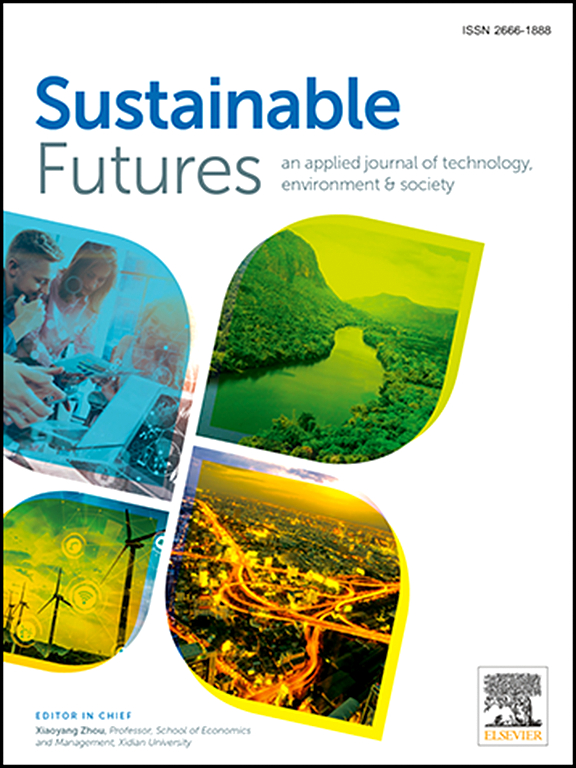Assessing sustainability indicators of public transportation using PAHP
IF 3.3
2区 社会学
Q2 ENVIRONMENTAL SCIENCES
引用次数: 0
Abstract
Sustainable public transport is vital for cities' growth and development. Enhancing public transit will boost demand, ensure balanced sustainability, satisfy users and operators, and help achieve sustainability goals. This requires finding a general framework to determine the priorities that accomplish the goal of sustainability and integration of the transportation system. To evaluate this complex problem, this study used the new technique of Multi-criteria decision-making (MCDM), which is the Parsimonious Analytical Hierarchy Process (PAHP) and the traditional Analytical Hierarchy Process (AHP) in two stages to streamline. The main objective of applying PAHP in the decision-making process is to reduce the number of pairwise comparisons required and prioritize 44 comprehensive indicators of the essential dimensions of sustainability in public transportation. This makes PAHP particularly efficient and less cognitively demanding for experts while still providing robust and reliable prioritization of criteria. The findings highlight that travel time, ticket prices, emissions, and traffic management are the most critical social, economic, environmental, and technical indicators. This approach streamlines evaluation and offers policymakers a clear roadmap for prioritizing sustainability measures in public transit. The implications of this work suggest that future development efforts should focus on enhancing these prioritized indicators to achieve a more sustainable public transportation system.
利用PAHP评估公共交通的可持续性指标
可持续的公共交通对城市的增长和发展至关重要。加强公共交通将促进需求,确保平衡的可持续性,满足用户和运营商的需求,并有助于实现可持续发展目标。这需要找到一个总体框架,以确定实现运输系统可持续性和一体化目标的优先事项。为了评估这一复杂问题,本研究采用了多准则决策的新技术,即简约层次分析法(PAHP)和传统的层次分析法(AHP)两阶段进行简化。在决策过程中应用PAHP的主要目标是减少所需的两两比较的次数,并优先考虑公共交通可持续性基本方面的44个综合指标。这使得PAHP特别有效,对专家的认知要求更低,同时仍然提供稳健可靠的标准优先级。研究结果强调,旅行时间、票价、排放和交通管理是最关键的社会、经济、环境和技术指标。这种方法简化了评估,并为政策制定者提供了明确的路线图,以便优先考虑公共交通的可持续性措施。这项工作的影响表明,未来的发展工作应侧重于加强这些优先指标,以实现更可持续的公共交通系统。
本文章由计算机程序翻译,如有差异,请以英文原文为准。
求助全文
约1分钟内获得全文
求助全文
来源期刊

Sustainable Futures
Social Sciences-Sociology and Political Science
CiteScore
9.30
自引率
1.80%
发文量
34
审稿时长
71 days
期刊介绍:
Sustainable Futures: is a journal focused on the intersection of sustainability, environment and technology from various disciplines in social sciences, and their larger implications for corporation, government, education institutions, regions and society both at present and in the future. It provides an advanced platform for studies related to sustainability and sustainable development in society, economics, environment, and culture. The scope of the journal is broad and encourages interdisciplinary research, as well as welcoming theoretical and practical research from all methodological approaches.
 求助内容:
求助内容: 应助结果提醒方式:
应助结果提醒方式:


